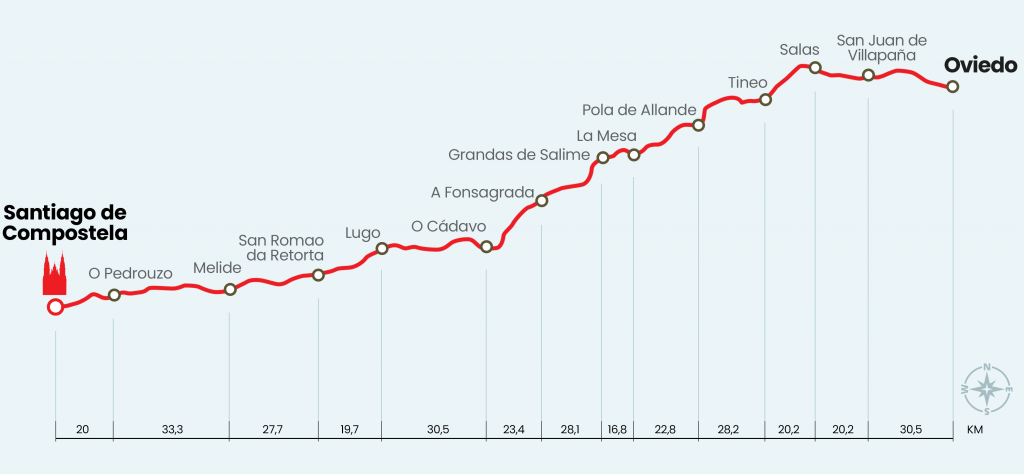Article translated by an automatic translation system. Press here for further information.

Primitive Way
13
321,4

The Primitive Way is the ideal starting point to discover the path of the first known Path, which Alfonso II the Casto took in the ninth century to visit the newly discovered tomb of the Apostle James.
Before you walk... you must know
Entering through the paths of a Camino de Santiago other than the traditional French always creates doubts for the pilgrim, especially if one is a novel and never has any been done. The route departing from Roncesvalles has always been and will be the most pampered and comfortable from the point of view of infrastructure and services. However, it may have lost much of its charm due to the rehabilitation of its environment and its massification, especially in the summer months and Jacobean years. There are many more historic alternatives to reach Santiago that will allow us to admire corners of the Spanish orography.
The Primitive Way is the ideal starting point to discover the path of the first known Path, which Alfonso II the Casto took in the ninth century to visit the newly discovered tomb of the Apostle James. The current itinerary faithfully reproduces the original, departing from Oviedo and crossing Asturias through all the councils of its west: Las Regueras, Grado, Salas, Tineo, Pola de Allande and Grandas de Salime. From the latter, the steps enter Lugo through the Puerto del Acebo and link to the French Way in Palas de Rei, where there are only two days left to reach the Plaza del Obradoiro.
The Principality of Asturias has invested many resources in recent years to condition the early route. The signs are literally perfect and at no time do they raise doubts about what path to take. The most forested and difficult areas of the journey are perfectly transitable along roads that have been cleaned up and that the passage of livestock takes care of every day to mark. In addition, it almost always avoids asphalt monotone and gives it a special character. Proof of this effort is the number of people who choose to do so and who are growing year after year. The only drawback for the pilgrim is the mud, which in the winter months and at the beginning of the spring flooded parts of the journey due to the great amount of rainfall suffered by Asturias. It is the price to pay for its always green valleys.